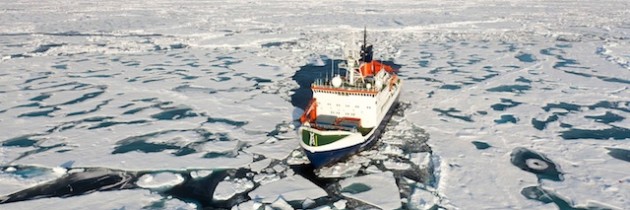November Was Cold, But the Climate Keeps Warming
Global warming is a misnomer. “Warming” makes it sound as if the climate will get hotter at a steady, predictable pace—like a pot of soup heating on the stove. But that’s not how our enormously complex climate system works. The increasing concentration of carbon dioxide and other warming gases in the atmosphere is just one of many factors affecting the global climate—including the natural year-to-year variability that has always been at work. Over the short term, temperatures can rise and fall like the fluctuating value of a single company in the stock market. But the long-term trends—the important trends—remain unchanged.
Case in point: the National Climatic Data Center revealed yesterday that the average temperature in the contiguous U.S. in November was 41.6 F—0.3 F below the 20th century average. That’s unusual—as the U.S. and the rest of the planet has warmed, most months in the country have been hotter than the average of the last century, which is considered a benchmark for a normal climate. (Globally, there hasn’t been a month with average temperatures lower than the 20th century mark for nearly 29 years.) In fact, there were nearly three times as many record cold daily highs and lows in November (2,238 altogether) as record warm daily highs and lows (749 combined).
That shouldn’t be a surprise for the Americans who braved a chilly Thanksgiving weekend, or for the Midwesterners who suffered through biting cold and heavy snow earlier this month. And if the cold weather continues—as I’m writing this the expected high in New York today is 27 F, well below the historically average high of 41 F—something even more unusual could happen: for the first time in 20 years, the U.S. may have more daily record lows over the course of a calendar year than daily record highs, as Andrew Freedman of Climate Central explained earlier this month:
That’s a stark reversal from last year — the warmest year on record in the U.S. — when record daily highs dwarfed record lows by a staggering 4-to-1 ratio. It’s also a stark reminder of the vagaries of short-term natural variability set against the backdrop of long-term global warming.
According to statistics from the National Climatic Data Center, the U.S. had 9,023 daily record high temperatures through Dec. 1, compared to 9,932 daily record lows. About 1,000 cold temperature records were set or tied during the last week alone.
The Arctic, too, got a bit of relief from climate change. The National Oceanic and Atmospheric Administration (NOAA) today released its report for the Arctic, which has seen some of the most rapid warming on the planet. Summer across much of the Arctic was cooler than it had been in years, and while the extent of summer sea ice—a good measurement of the impact of climate change on the Arctic—melted to its sixth-smallest level since NOAA began keep records in the late 1970s, it still rebounded from a far worse year in 2012. “The Arctic caught a bit of a break in 2013 from the recent string of record-breaking warmth and ice melt of the last decade,” David M. Kennedy, NOAA’s deputy under-secretary for operations, told reporters at the American Geophysical Union scientific conference in San Francisco.
So should we call off the alarm over climate change? Not quite. As Kennedy went onto say, even a relatively “good” year for the Arctic is still a bad one historically. “The relatively cool year in some parts of the Arctic does little to offset the long-term trend of the last 30 years: the Arctic is warming rapidly, becoming greener and experiencing a variety of changes, affecting people, the physical environment, and marine and land ecosystems,” he noted. The Arctic kept getting greener (a strong sign of warming), Greenland’s ice kept melting and the snow extent across the Northern Hemisphere in May and June was below average. Average Arctic temperatures have increased by 3.6 F since the 1960s, twice as fast as the rest of the world. A slightly less warm year isn’t going to change that long-term trend.
And that will be true for the U.S. as a whole, even if this year does see more record cold days than record hot ones. November might have felt unusually chilly, but that’s just compared to the especially warm years we’ve had recently. (2012 was the warmest year on record for the contiguous U.S.) During most of the 20th century, November would have felt perfectly average. And while the U.S. has experienced a cold snap, the world has still seen above-average temperatures overall, and 2013 is expected to be among the top 10 warmest years on record. If 2014 becomes an El Nino year—and the odds are about even—we could well experience the hottest year ever. Climate change won’t be derailed by a few cold days.
Fonte: time.com



